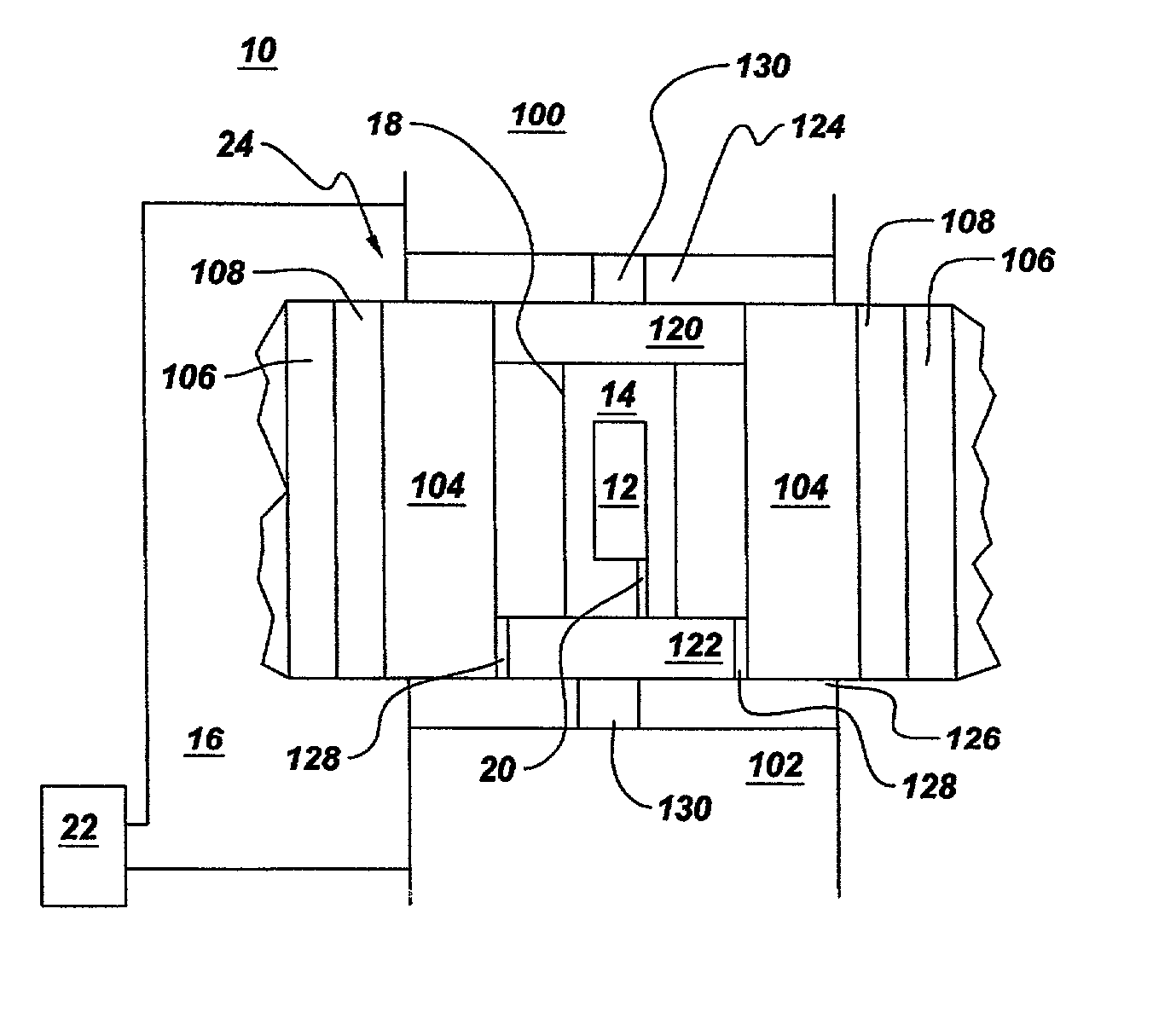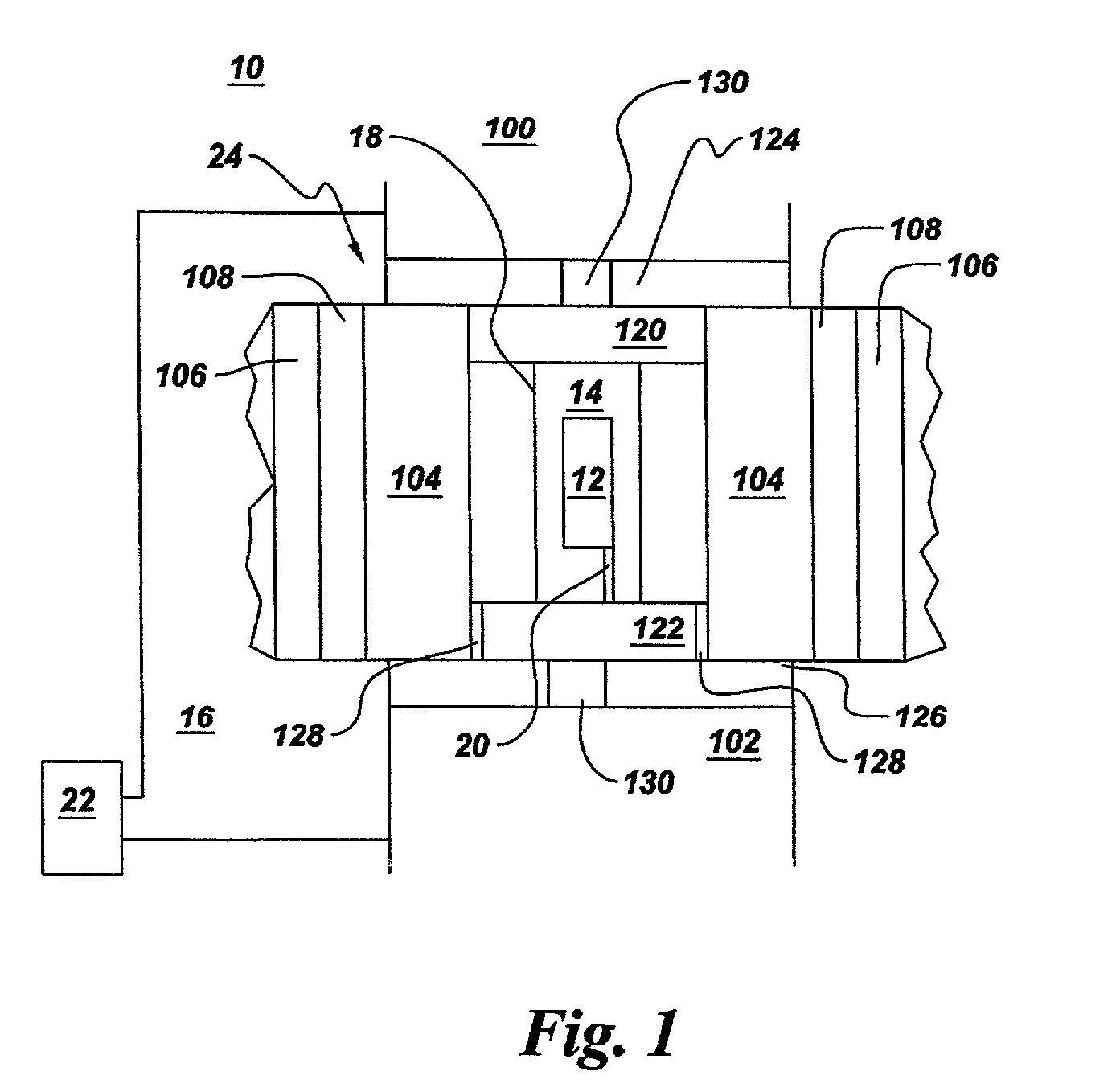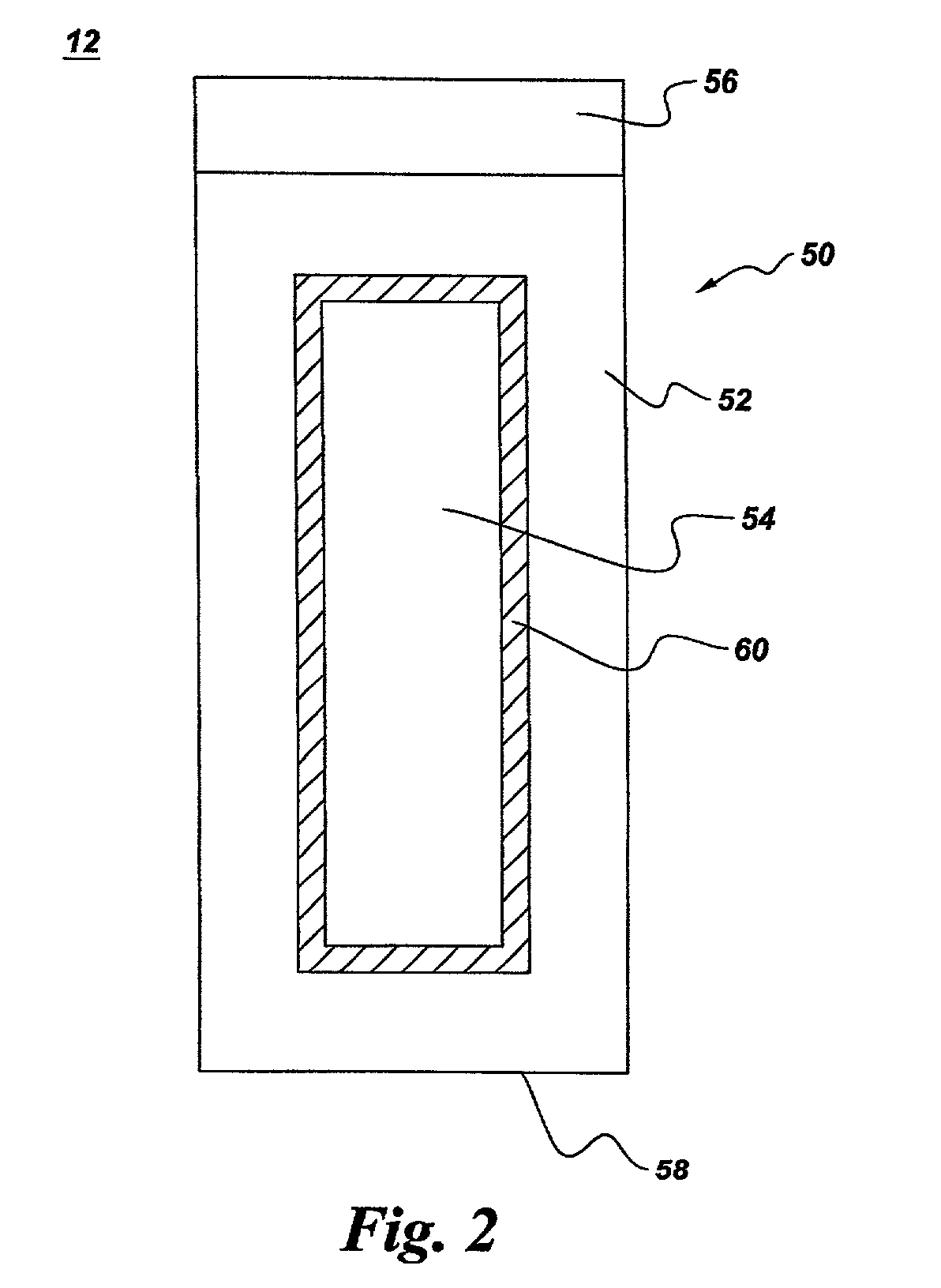Pressure vessel
a pressure vessel and pressure technology, applied in the field of pressure vessels, can solve the problems of capsule bursting and capsule crushing, and no suitable autoclave design is currently availabl
- Summary
- Abstract
- Description
- Claims
- Application Information
AI Technical Summary
Benefits of technology
Problems solved by technology
Method used
Image
Examples
Embodiment Construction
[0041] Pressure vessel tooling for use in a 1000-ton hydraulic press was fabricated as follows. A cemented tungsten carbide die having an inner diameter of about 2.0 inches, an outer diameter of 6.9 inches, and a height of 3.7 inches was shrink-fitted into a steel die sleeve. The die sleeve contained eight axial cooling channels to provide for water cooling of the die. The die and die sleeve were pressed into a belt comprising three compression-fit steel rings having outer diameters of about 10.7 inches, 14.7 inches, and 19 inches, respectively. The die, die sleeve, and steel compression rings had interferences so as to provide compression of the die. The belt assembly was then press-fitted into a fourth steel "guard" ring with an outer lip to permit lifting and transport. Brass rings with channels machined into the inner faces were attached to the top and bottom of the die sleeve, with the channels aligned with the axial cooling channels in the die sleeve so that water could be for...
PUM
 Login to View More
Login to View More Abstract
Description
Claims
Application Information
 Login to View More
Login to View More - R&D
- Intellectual Property
- Life Sciences
- Materials
- Tech Scout
- Unparalleled Data Quality
- Higher Quality Content
- 60% Fewer Hallucinations
Browse by: Latest US Patents, China's latest patents, Technical Efficacy Thesaurus, Application Domain, Technology Topic, Popular Technical Reports.
© 2025 PatSnap. All rights reserved.Legal|Privacy policy|Modern Slavery Act Transparency Statement|Sitemap|About US| Contact US: help@patsnap.com



